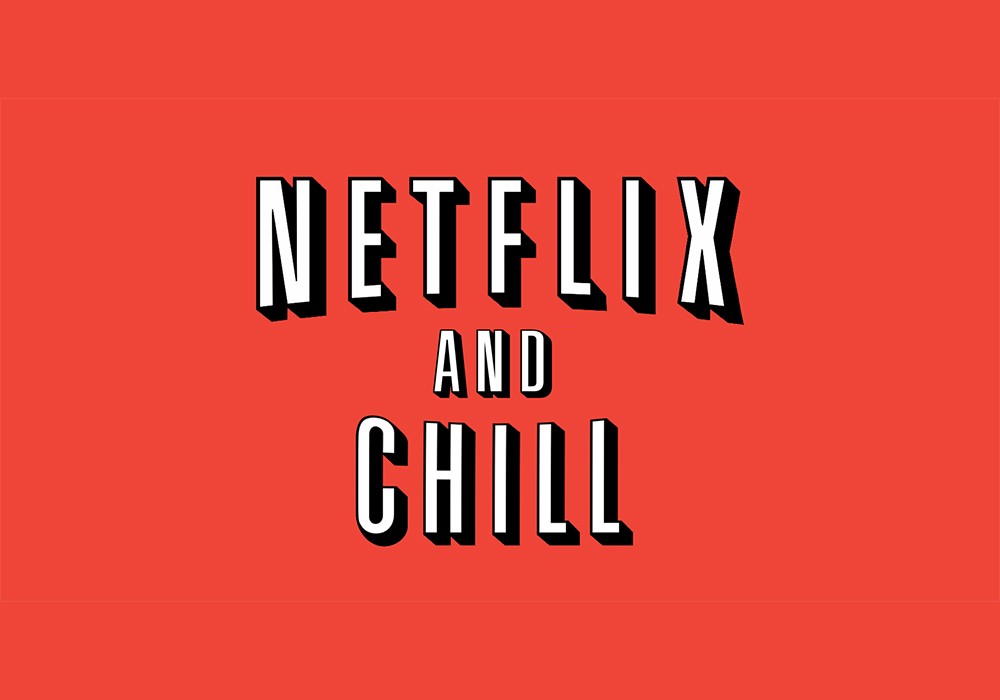Like many of my peers, I used to enjoy sitting in front of the TV from 7 pm - 10 pm watching Channel 5 and 8 every weeknight.
Fast forward 15 years, watching local TV is hardly an essential activity any more. And even when I do watch some local TV programs like Tanglin or 118, I'm on my mobile phone half the time scrolling through social media.
Interestingly, a study by think-tank DQ Institute and the Nanyang Technological University (NTU) found that 12-year-old Singaporeans spend 6 hours a day on electronic devices.
Over in the United States, television-viewing is falling -- Nielsen found that 18 to 24 year-old Americans on average have gone from watching 3.8 hours of television per day in 2011 to just 2 hours daily in 2016.
As Internet access becomes more commonplace and available at higher speeds, the competition for our attentions will only intensify.
With the likes of Facebook, Instagram, and, YouTube all wanting a piece of the "eyeball pie", where does a smaller player (internationally) like MediaCorp figure in the world of free-to-watch and on-demand content ranging from homemade cat videos to million-dollar web series?
I think there are lessons MediaCorp can learn from how the New York Times stays adaptable to become indispensable and how Netflix pours resources into making its user experience class-leading.
Transitioning a 165-year-old newspaper into a digital platform
The Internet has not been kind to the NYT. With people switching from thumbing through physical papers to thumbing through their smartphone screens, advertising revenue for NYT has halved in the last decade. In 2016 alone, NYT's print advertising revenue dropped 16 per cent.
The drop in revenue probably precipitated the Innovation Report, an internal NYT "wake up call" document leaked in May 2014 which mentioned a need to "rethink print-centric traditions". In the report, NYT's publisher's son A.G Sulzberger called for the paper to become "digital first".
Three years later, in its 2020 Report published in Jan 2017, NYT continued to say that it was "winning at journalism" but "not at a scale sufficient to achieve the company’s goals or sustain our cherished newsroom operations."
In an age where news content is almost always available for free from hundreds of sources online, change NYT must, and change it has.
Redefining journalism? Or simply adapting to the times
As part of the push for digital first, NYT has committed to change the way it reports the news -- that's huge coming from an institution that is supposedly a lodestar for good journalism.
The first change was to be more visual-oriented in their storytelling, a departure from how the newsroom traditionally places photo-journalism a rung lower than the written word.
We also need to become more comfortable with our photographers, videographers and graphics editors playing the primary role covering some stories, rather than a secondary role. - 2020 Report
More importantly to stay relevant, NYT is experimenting how it can be part of a reader's daily routine beyond what people traditionally associate with news consumption.
We need more journalistic forms that make The Times a habit by frequently enlightening readers on major running stories, through email newsletters, alerts, FAQs, scoreboards, audio, video and forms yet to be invented.
Its journalists are also encouraged to "use a less institutional and more conversational writing style" which is "consistent with the lingua franca of the Internet." This point alone would make traditional journalist shift uncomfortably, and it is coming from NYT no less.
Diversifying journalism
As a way to capture more returning readers and collect data, NYT is also moving into digital service journalism where readers can expect consumer-oriented advice.
Its first two offerings are Cooking and Watching. Both platforms employ an IFTTT (If-This-Then-That) approach where readers click on a few successive queries to arrive at the advice they need.
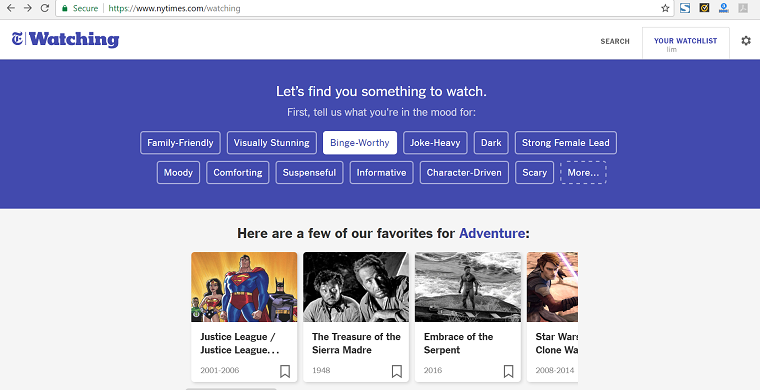 Readers select successive sub-categories of what they would like to watch and Watching will recommend shows based on those choices.
Readers select successive sub-categories of what they would like to watch and Watching will recommend shows based on those choices.
NYT's high profile purchase of The Wirecutter, a website which redefined how tech product reviews are packaged and presented to readers, is also indicative that it is moving away with traditional formats that are a dime a dozen on the Internet.
NYT is still undergoing its metamorphosis into a digital first company, but it is evident that its focus is shifting from getting as many people to read its news as possible, to becoming more useful for its current captive subscription-based audience. They want user engagement, not loyalty-free page views. They say as much here.
MediaCorp can adopt NYT's spirit of trying to become indispensable to viewers
MediaCorp has a treasure trove of useful information on offer to its viewers -- decades’ worth in fact. From cooking shows, travel documentaries, news, dramas, etc., MediaCorp has Singapore-flavoured content at a magnitude no other player has currently.
In fact, the old Singapore content may have a way to unlock many past memories of what makes us Singaporeans.
So the content is already there. The challenge is delivering it to Singaporeans.
MediaCorp’s streaming service and app, Toggle, is a step in the right direction in giving this on-demand access. However, when matched up against easy-to-use services like Netflix and YouTube, viewers can be quite unforgiving.
If there is a takeaway from NYT's transformation, it is their willingness to slay a few sacred cows, and adapt itself to the new normal to try to become useful and indispensable to its subscribers, beyond just being a newspaper.
Is MediaCorp ready to move beyond just being a broadcaster and focus on being digital first like NYT?
This brings us next to Netflix.
Netflix: it has 90 seconds to win you over
On a recent press trip to Netflix's headquarters in Los Gatos, I learnt that Netflix has 90 seconds before a typical person gets bored on the Netflix app and moves on to a different activity. MediaCorp's Toggle will face this similar challenge.
The tight time frame compels Netflix to continually innovate and find ways to improve its user experience and recommendation algorithm to reduce dropouts.
Attention to the smallest detail
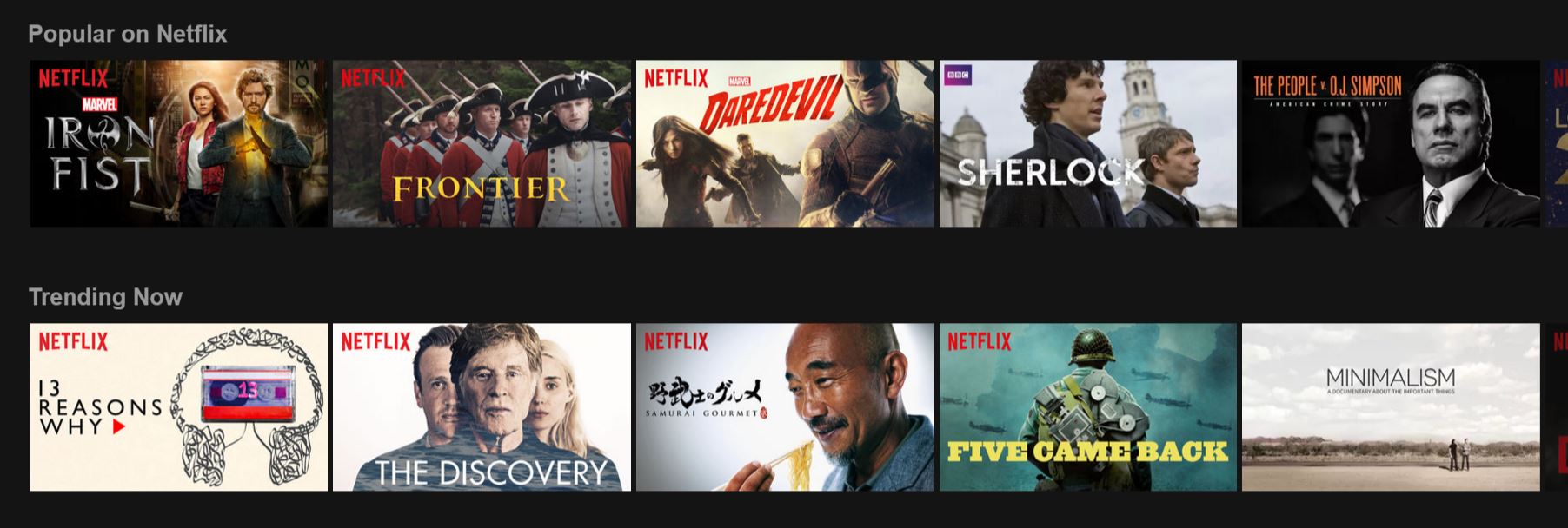 There is art and science behind the choices for placeholder images.
There is art and science behind the choices for placeholder images.
Most people would not put much thought into a show's placeholder image. While it is economical to use default images and run with things, Netflix puts considerable research muscle and A/B testing into finding out which kinds of images would result in more viewership.
The end result is something like this:
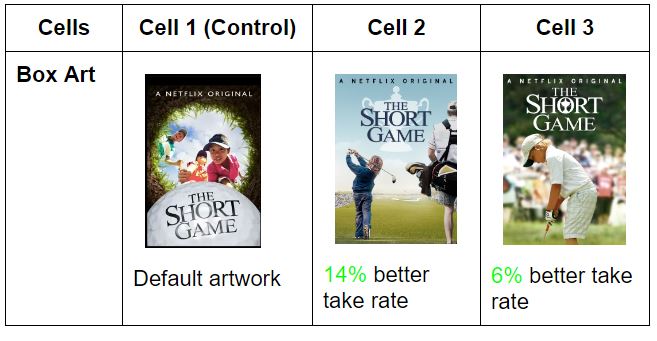
Quite a lot of work for just for a placeholder image.
Data-driven improvements
Netflix does over 200 tests a year, according to Netflix's Vice President of Product Todd Yellin. And Yellin also gave a little insight at what Netflix looks at:
We work on the algorithm front. Lots of machine learning, lots of big data. We take all the information we have, what people watch, when they watch it, how much do they watch it, what time of day do they watch it, on what device do they watch it and what do they watch before, what do they watch after and what profile did they watch it. Some of that data is junk. Some of it is gold and we figure out how to leverage that data to put the right content in front of the right people at the right time.
One direct result of Netflix's obsession with data is the creation of what they call "taste communities". With 93 million subscribers in over 190 countries, one would assume Netflix would segregate viewers based on geography - only they don't.
Yellin shared that through Netflix's study of viewer behaviour, it has identified over 1,300 "taste communities" which are not bound by geography.
Through the identification of these taste profiles, better recommendations can be made to viewers. A direct result of using "taste communities" to profile viewers is that, as of last week, Netflix provides a percentage match a viewer has for a show available on Netflix.
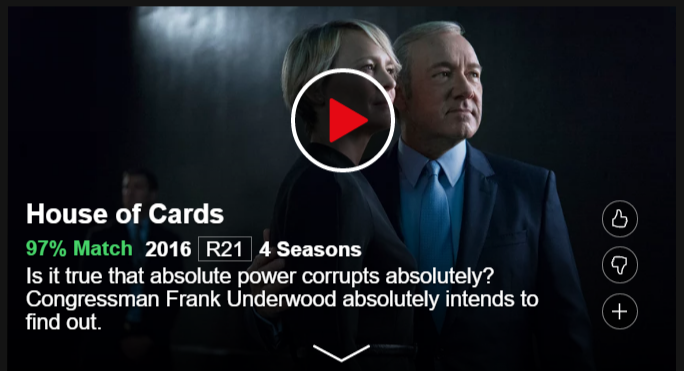 It can tell how "compatible" you are with a show. Like dating, only less messy.
It can tell how "compatible" you are with a show. Like dating, only less messy.
Imagine that. So much work just to get you to watch a show within 90 seconds of opening the app.
MediaCorp can still catch up
Minister of State for Communications and Information Chee Hong Tat shared earlier this year that the government would continue to support MediaCorp's streaming platform Toggle.
According to Chee, Toggle is going big on original content.
"This year, Mediacorp will roll out an even bigger slate of Toggle Originals. These will involve collaboration with independent producers and tertiary institutions, and cover a diverse spectrum of genres to offer more content choices ... For better user experience, Toggle will also enhance its streaming reliability, navigation, content recommendation and personalisation features."
He added that Toggle "has seen a three-fold increase in unique viewers since its re-launch in April 2015 -- an encouraging improvement considering the intense competition for eyeballs."
With the likes of Netflix setting a high bar, will Toggle, with aid from the government, one day have a UI that can rival Netflix's?
As we become more global with our mindset (our demand for the ease of accessibility), we also want local content that can tug at our Singapore hearts.
We want our local content to act as "time capsules" as we grow up and grow old, unlocking memories and knowledge that remind us and others that Singapore is an ideal that has both local and universal appeal.
If you like what you read, follow us on Facebook and Twitter to get the latest updates.
If you like what you read, follow us on Facebook, Instagram, Twitter and Telegram to get the latest updates.
